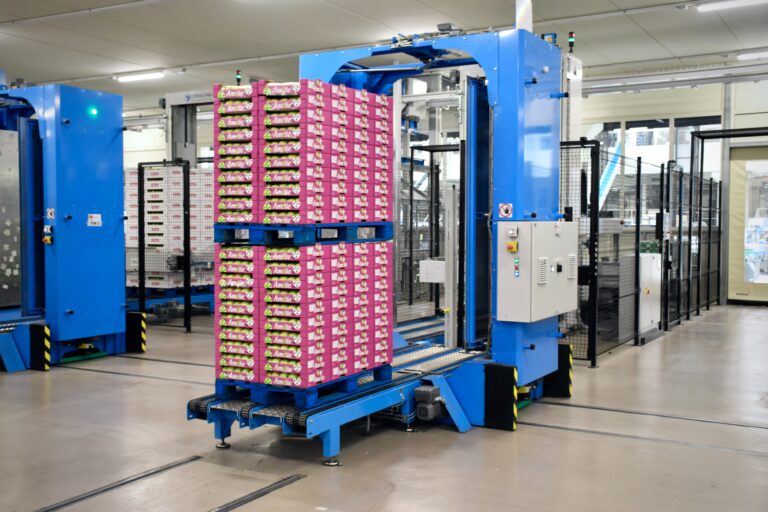
In the dynamic world of logistics and supply chain management, warehouse automation stands as a game-changer. This article delves into the types of warehouse automation, the benefits they offer, and the latest trends in automation technologies. If you’re looking to increase productivity in your warehouse or distribution center, this read is worth your time.
Understanding the Warehouse
A warehouse is more than just a storage facility. It’s a complex ecosystem of many warehouse processes, from receiving and storing items to picking, packing, and shipping them. The efficiency of these processes directly impacts the productivity of the warehouse. With the advent of automation technologies, warehouses and distribution centers worldwide are undergoing a significant transformation.
What is Warehouse Automation?
Warehouse automation refers to the use of technology to automate various warehouse tasks. This can range from conveyor systems and automated storage and retrieval systems (AS/RS) to more advanced solutions like mobile robots and AI-powered warehouse management systems. By automating a warehouse, businesses can significantly increase productivity and efficiency.
Types of Warehouse Automation
There are many types of warehouse automation, each designed to optimize a specific aspect of warehouse operations. Some common types include:
- Conveyor Systems: These are used to transport items around the warehouse, reducing the need for manual handling.
- Automated Storage and Retrieval Systems (AS/RS): These systems automate the storage and retrieval of items, improving accuracy and speed.
- Sortation Systems: These systems automatically sort items based on certain criteria, such as destination or product type.
- Mobile Robots: These robots can navigate complex warehouse layouts to pick and transport items.
- Warehouse Management Systems (WMS): These software solutions automate administrative tasks like inventory management and order processing.
Benefits of Warehouse Automation
The benefits of warehouse automation are manifold. By automating warehouse processes, businesses can:
- Increase Productivity: Automation can speed up warehouse operations and eliminate bottlenecks, leading to higher throughput.
- Improve Accuracy: Automated systems reduce the risk of human error, resulting in more accurate picking, packing, and shipping.
- Enhance Safety: By reducing the need for manual handling, automation can make the warehouse safer for employees.
- Save Space: Automated storage and retrieval systems can make better use of warehouse space, allowing for more efficient storage.
Current Trends in Warehouse Automation
As technology evolves, so do trends in warehouse automation. Some of the latest trends include:
- AI and Machine Learning: These technologies are being used to optimize warehouse operations and inventory management, from predicting demand to optimizing pick paths.
- Blockchain: This secure, automated technology is enhancing data collection capabilities across systems, improving transparency and traceability.
- Robotics: From autonomous mobile robots to robotic arms, robotics technology is becoming increasingly prevalent in modern warehouses.
How Does Warehouse Automation Work?
Warehouse automation works by integrating various automated systems and technologies into the warehouse workflow. For example, a conveyor system might transport items from receiving to storage, where an AS/RS system stores them efficiently. When an order comes in, a mobile robot could pick the items and transport them to a packing station, where an automated sortation system sorts them for shipping.
Key Technologies in Warehouse Automation
Several key technologies are driving warehouse automation:
- Robots: Robots can perform a variety of tasks, from picking and packing to transporting items.
- AI: AI can analyze data to optimize warehouse operations, from predicting demand to optimizing pick paths.
- ERP Systems: These systems integrate various business processes, including supply chains and warehouse operations, into a single, unified system.
Improving Warehouse Processes with Automation
Automation can improve many warehouse processes. For example, automated guided vehicles (AGVs) can transport items around the warehouse more efficiently than humans. Automated storage and retrieval systems (AS/RS) can store and retrieve items more accurately and quickly. And warehouse management software can streamline administrative tasks like inventory management and order processing.
The Future of Warehouse Automation
The future of warehouse automation looks promising. As technology continues to evolve, we can expect to see even more advanced automation solutions, from AI-powered robots to blockchain-enabled supply chains. These technologies have significant implications for warehouse operations, promising to increase productivity, improve accuracy, and enhance safety.
Key Benefits of Warehouse Automation: A Recap
In conclusion, warehouse automation offers numerous benefits:
- Increased productivity
- Improved accuracy
- Enhanced safety
- Better use of space
By investing in the right warehouse automation solutions, businesses can transform their warehouse operations, making them more efficient, accurate, and productive. Whether you’re running a small distribution center or a large warehouse, automation can help you meet your business goals.
For more insights into warehouse optimization, check out our articles on Principles of Material Flow for Warehousing, Warehouse Consultant Guide, and Top 10 Warehouse Safety Concerns.
Ready to take the next step towards a more efficient warehouse? Contact JDH Warehousing Consultants today to explore how we can help you leverage the power of automation.